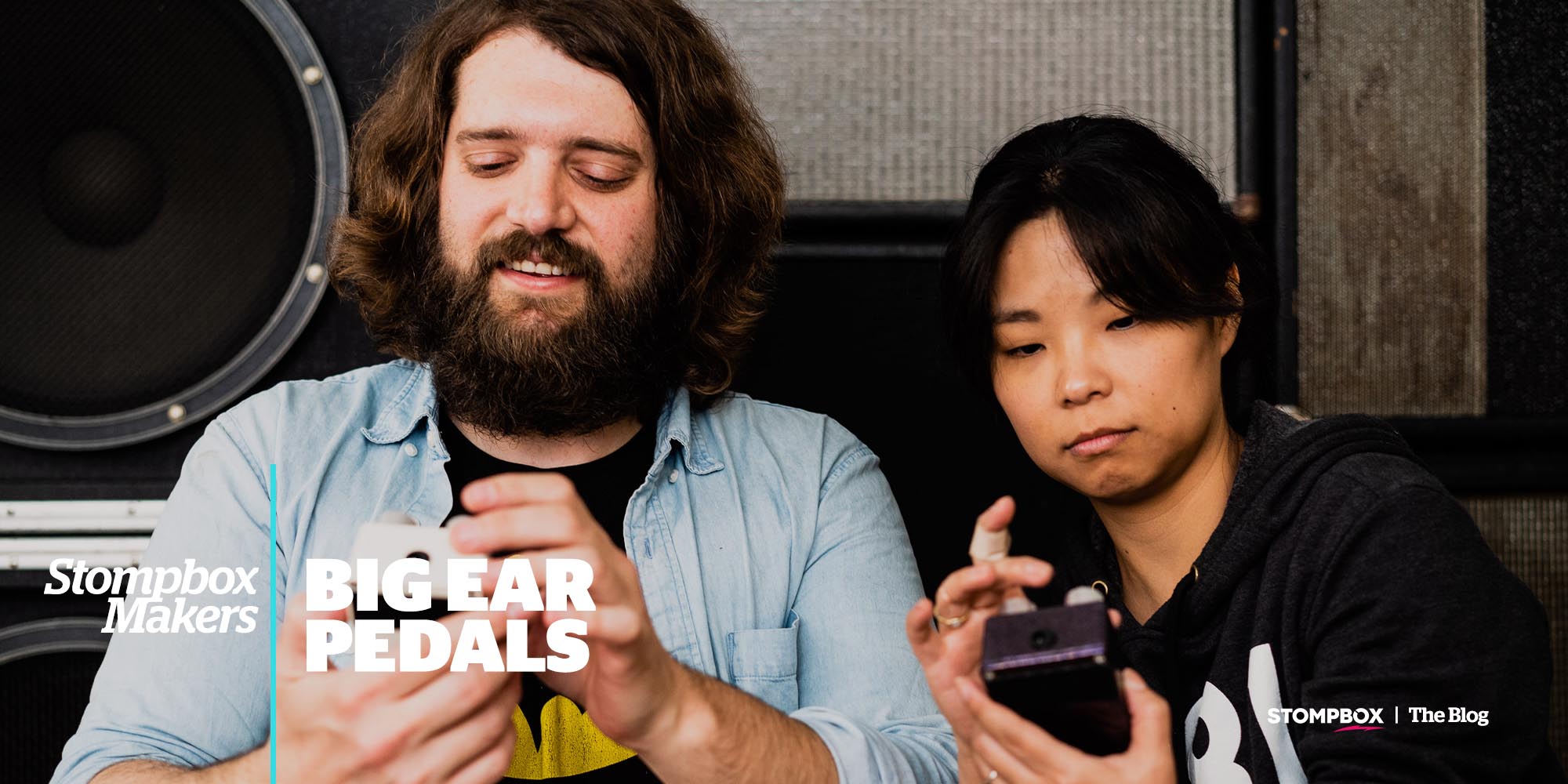BIG EAR Pedals | Stompbox Makers
Plug into a BIG EAR pedal like FRANK, WOODCUTTER or LOAF, and you immediately pick up on the kind of boyish excitement that exudes from its chief designer and company head Grant Wilson, who started the company about a decade ago with his partner Karen Schierhorn.
An inspired drummer and guitar geek—formerly of Brooklyn indie band The Click Clack Boom—Wilson found his true calling when he began designing and producing pedals notable for their gnarly, vintage vibe, Zen-like minimalist graphic aesthetic, and simple front panels. Recalling the energy and tone of classic stomps like the Colorsound Tone Bender and others, BIG EAR pedals, including the superb reverb ELLE, are decidedly not about manicured sounds, but inspired ones, and the hand-crafted spirit behind them comes through in every hand-wired box.
An avid collector with a generous (and incredibly organized!) stash of pedals from the 60s, 70s, 80s and beyond, Wilson takes the time to get under the hood of his favorites to see what makes them really tick. We caught up with Grant and Karen during some downtime at their old place in Nashville, Tennessee. (Interview took place 3 years ago. They are now operating from a different place, still in Nashville.)
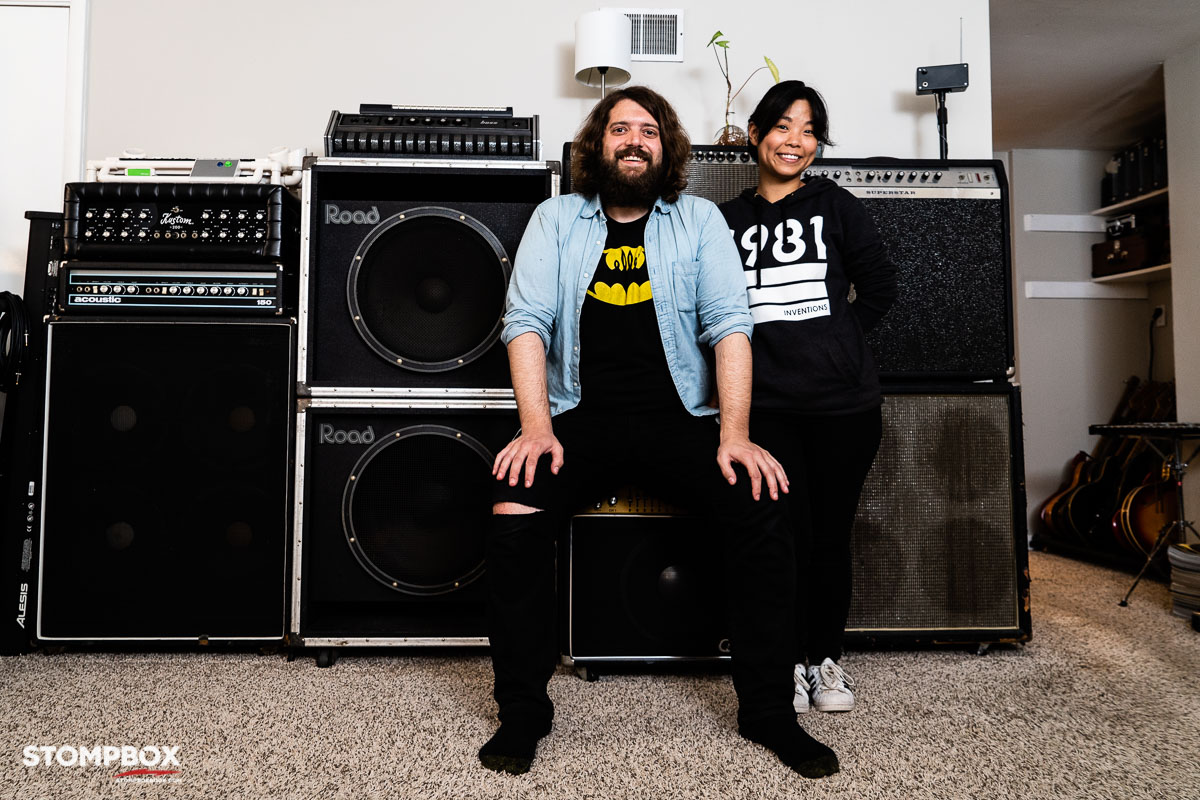
How do you decide what to work on next?
Honestly, right now, we’re kind of just making the pedals that people let us know they want. We have four pedals in our line currently. Our WOODCUTTER is our best seller. So we are making a lot of WOODCUTTERs right now. But if you’re talking about what to do next as far as a design or future pedal, it’s never been the same twice. It just comes out of an idea for a pedal that I personally wanted or something that I thought our line needed, so that somebody could play the demo board at a store or a show, and experience how all the pieces and parts contribute to the sound. For example, our next pedal started as a request from a friend who was looking for a specific solution for his pedalboard.
“It’s not about reinventing the wheel for me; it’s about making a great-sounding, easy-to-use and road-worthy effects pedal.”
So, when you begin working on a new effect, how clear of an idea do you have for what you want, and how much does the end result resemble your original vision? How much research is involved?
The pedal we’re working on right now has taken about a year of R&D. It’s almost done. There has been a ton of research involved. We have test-played with twenty different musicians, and explored what they liked about the pedal and what they would change if they could. An original concept definitely changes through the course of the design, and I think for the better—we really wouldn’t make the changes if it didn’t make sense. It also helps to determine what to work on next.. you see what works with people and what people like. The new pedal that we’re working on right now, has inspired the next three pedals we’ll be making just because of the design and the concept—it’s kind of birthing a series.
There are a lot of stompboxes on the market already. How hard is it to come up with something that hasn’t been done before?
It’s not about reinventing the wheel for me; it’s about making a great-sounding, easy-to-use and road-worthy effects pedal. Something you can plug into and start making music with right away. That said, I think our new pedal, ALBIE, is definitely different from anything that has been done before. But that’s not really why I like it. I like it because I can plug into it and immediately be inspired to create. And because it sounds so good.
Have you ever come up with a crazy effect that you doubted had much practical use, only to find someone who had the perfect use for it?
Honestly, I’m hoping that is what our ALBIE pedal is. I think it’s a little silly, a little semi-impractical, kinda whacky, but I really think that if you sit down and play with it for a few seconds, you’ll get it.
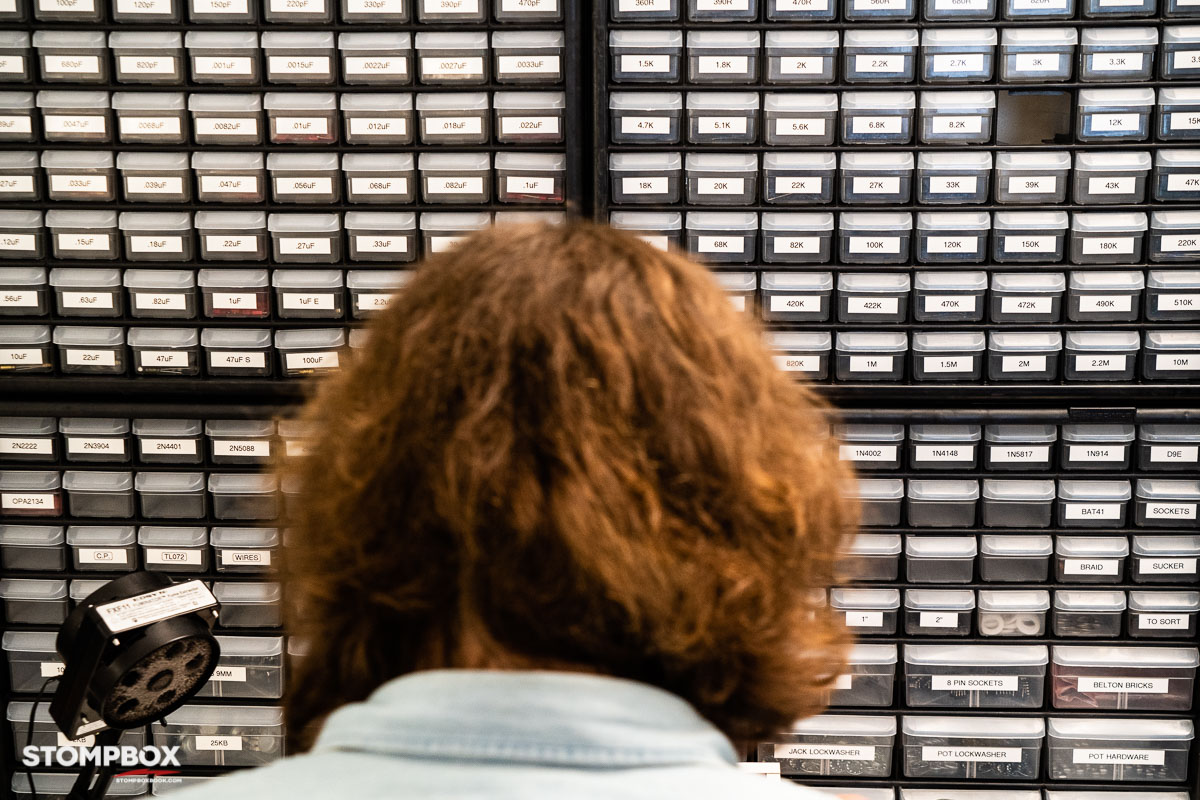
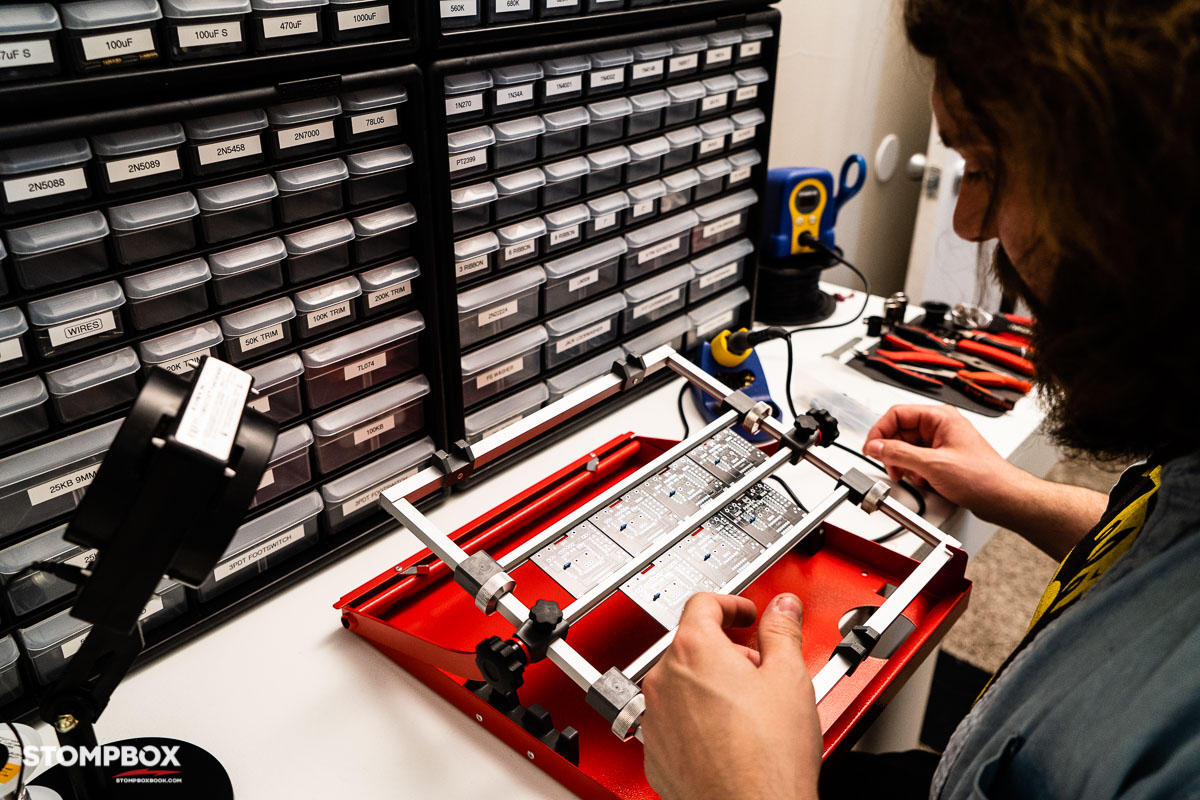
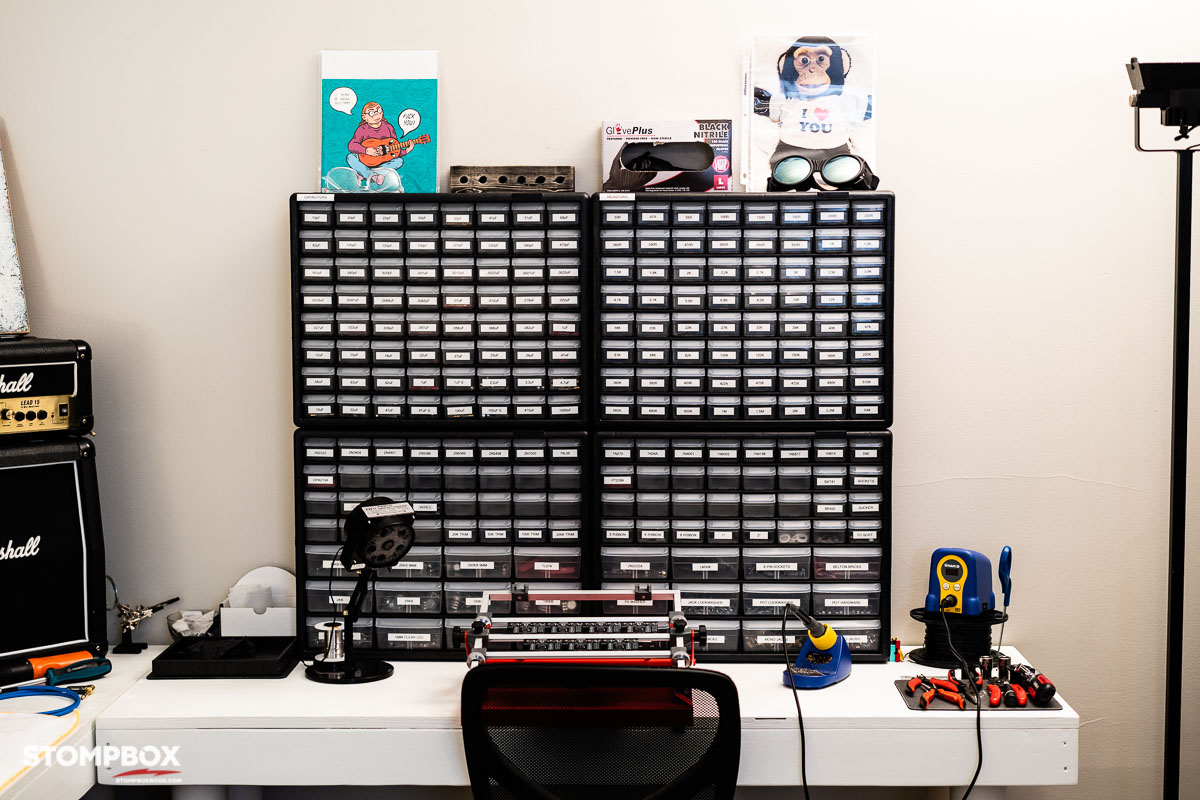
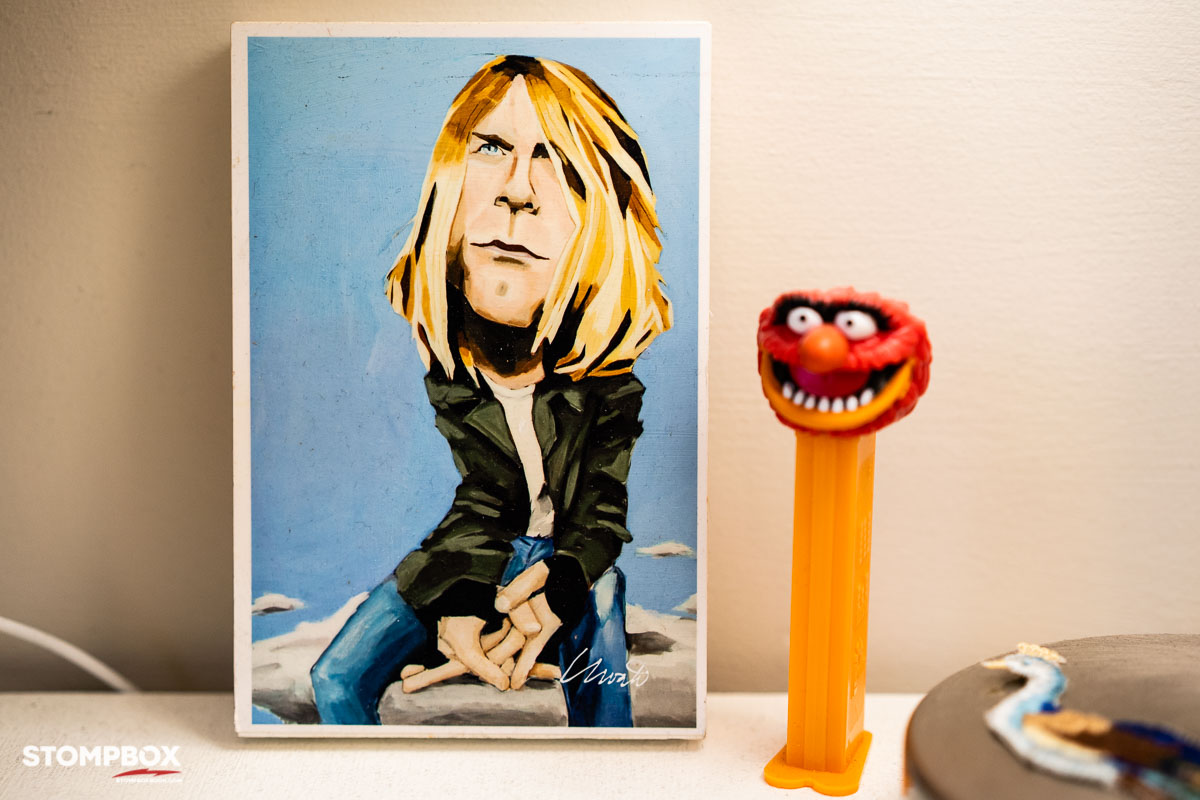
Can you talk a little about your creative process? How much trial-and-error is involved in the process of building a circuit board? How far do you push the process until it works?
At least up until our most recent pedal, I’ve always hired engineers and designers. So for me, maybe it is a little different, because I’d just say, “Keep trying!” I wanted it to sound right. When I started building pedals, I had very little understanding of the electronic side of things, so I would challenge people to do things even if they told me it wasn’t possible. I would say, “Do it anyway,” and it would sometimes end up working. I can’t answer when it’s too far, but for me, it would be when your engineer either quits or blows up! But I’ve never experienced that!
“I had been working on pedal designs for a while, and I got this idea for a name and a look and made a 6-ft tall drawing of this pedal called the LOAF. And that ended up basically becoming our first product. I had Karen essentially digitize the drawing from the chalkboard, and then that became our look.”
What are the most difficult and expensive parts to find? What parts are the most finicky?
We don’t really use “mojo” parts. We don’t use all new old stock or anything like that. We use what I think are just really great parts, and ones that are readily available. That said, we do use the LM308 Op-Amp in one of our pedals, and that’s damn near impossible to find nowadays. When we do find them, we basically buy as many as we can. So anyone out there, if you have them, hit me up!
Diodes are something you have to be careful with because they’re glass and they can break if you get them too hot. I test all the LED’s just to make sure they’re working and also white. The new old stock LM308s of course have to be tested because sometimes they don’t work. But the most finicky parts are certainly footswitches. Footswitches break. It’s just something that happens. It’s what you’re stepping on. They’re not finicky when you’re building the pedal, but for the player, once it’s out there in the world, it’s the thing that breaks the most often. It’s something you see every day, like when the player is going to hit their big solo, and they really stomp on the pedal hard because they’re super into it. I’m always thinking, “Y’know, it doesn’t get any louder the harder you step on it . . . !”
How does the process of creating the name, the look and the graphics of the pedal work?
At this point, we have a pretty defined, minimalist look to our pedals, and we try to stick within that. We try to make our pedals all look like they’re our pedals. So, when you see one on a board, you know right away that it’s a BIG EAR pedal.
Before we Iaunched the company, we were vacationing in a lake house in upstate New York, and they had one of those chalkboard walls. I had been working on pedal designs for a while, and I got this idea for a name and a look and made a 6-ft tall drawing of this pedal called the LOAF. And that ended up basically becoming our first product. I had Karen essentially digitize the drawing from the chalkboard, and then that became our look.
After that, we named some of our pedals after graffiti artists because I lived in New York a long time, and I really like graffiti. LOAF was named after our bunny rabbit. Now, the bunny’s name is not LOAF— the bunny’s name is Pam. We also have a bunny named Chase. But bunnies do this thing called “loafing.” And at the time, we only had one bunny, and she was our little “loaf.” (They tuck their feet under themselves and look like a little loaf of bread.) So I named the pedal “LOAF” after her. Anyway, the next pedal we’re making is named after our cat . . . !
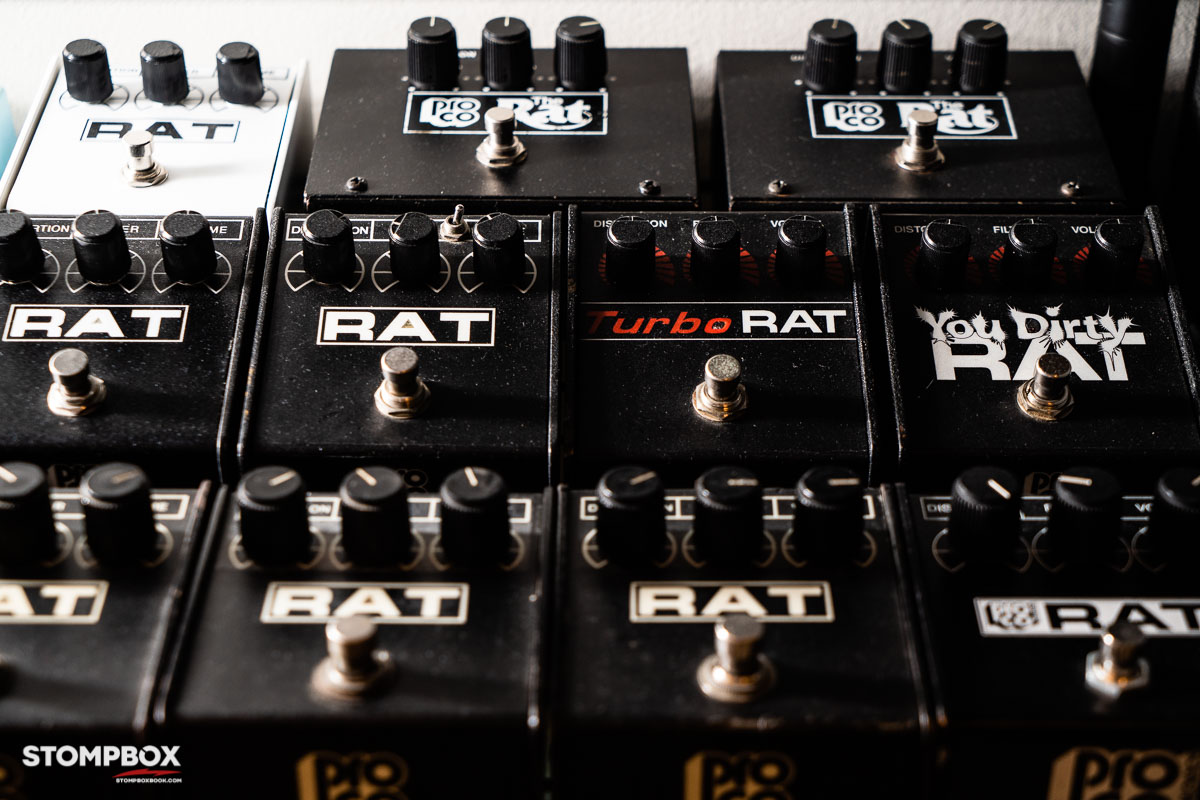

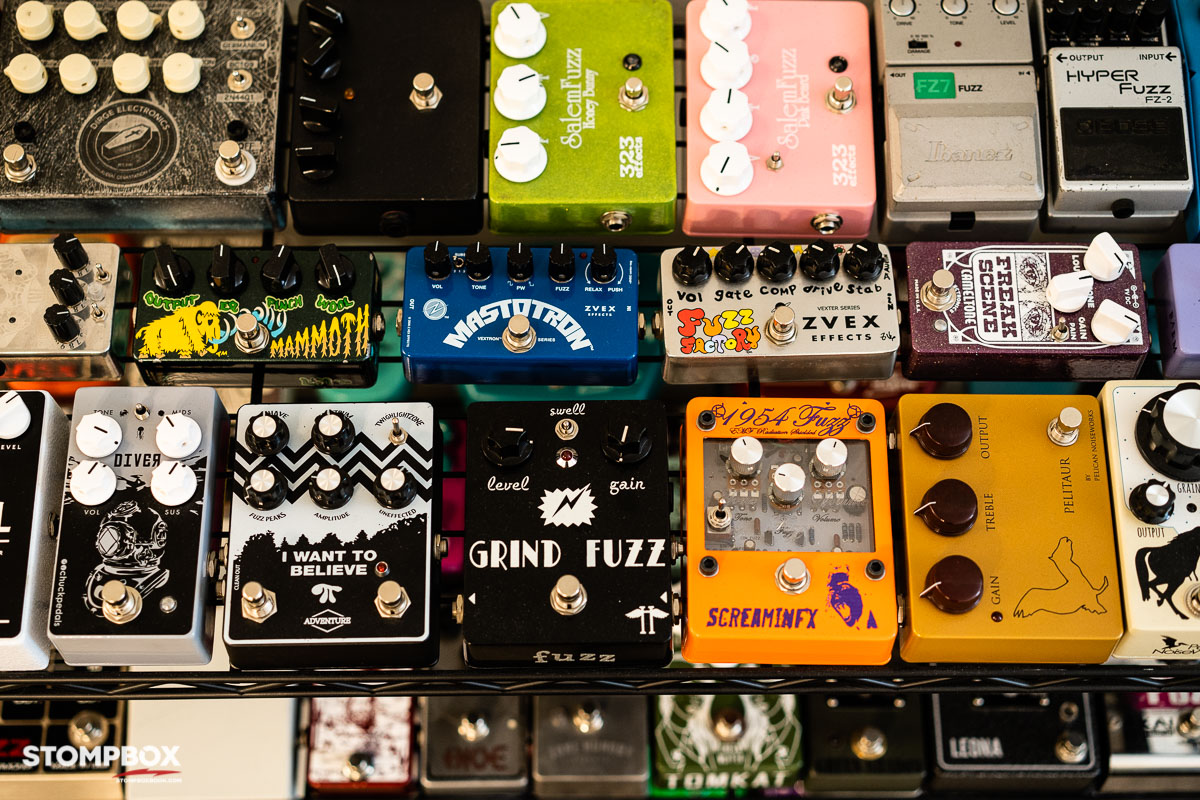
Was there a particular song (or some other a-ha moment) that drew you to this line of work?
When I was a kid, I went to see the Red Hot Chili Peppers and the Foo Fighters in State College, PA. And this fairly new band at the time, Muse, opened up for them, and I’d never heard anything like that before. I think the bass player’s pedalboard was the size of a refrigerator box. It was ridiculous. And I’d never even seen a guitar player with a pedalboard that big, let alone a bass player! And it was just really exciting to me, and I just started buying a bunch of pedals after that and trying to make crazy sounds. That really is why I am now a pedal maker.
Is there a song or two that you could point to as a particularly fine example of what your effects can do?
A lot of the lead work on Cage the Elephant’s Tell Me I’m Pretty was played by Nick Bockrath using one of our fuzz pedals. The UK band, Slaves, and their guitarist Laurie Vincent, use both LOAF and WOODCUTTER on almost every song since their first full-length album. They stack them actually—using them simultaneously for the core of their sound. We’re fortunate to have great support from people like Britt Daniel from Spoon, Paul Banks from Interpol, Andrew Bird, our good friend Jason Roberts who plays with Nora Jones, Marcos Curiel from P.O.D., Boris Pelekh from Gogol Bordello, Russ Flynn from X-Ambassadors, Matthew Hoopes of Reliant K. It’s a pretty wide range of people.
Without jinxing myself, and I’ve tried in the past and it hasn’t worked yet, but I would love to get some pedals to Muse—specifically their bass player!
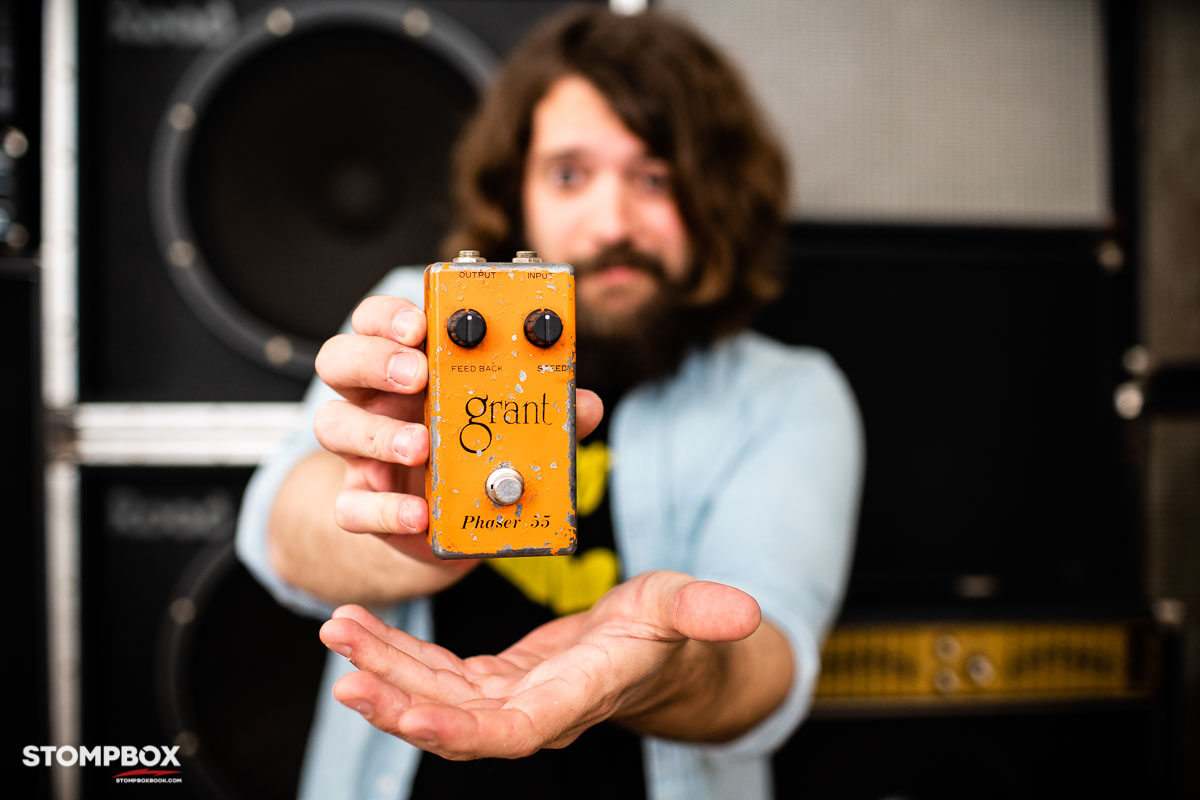
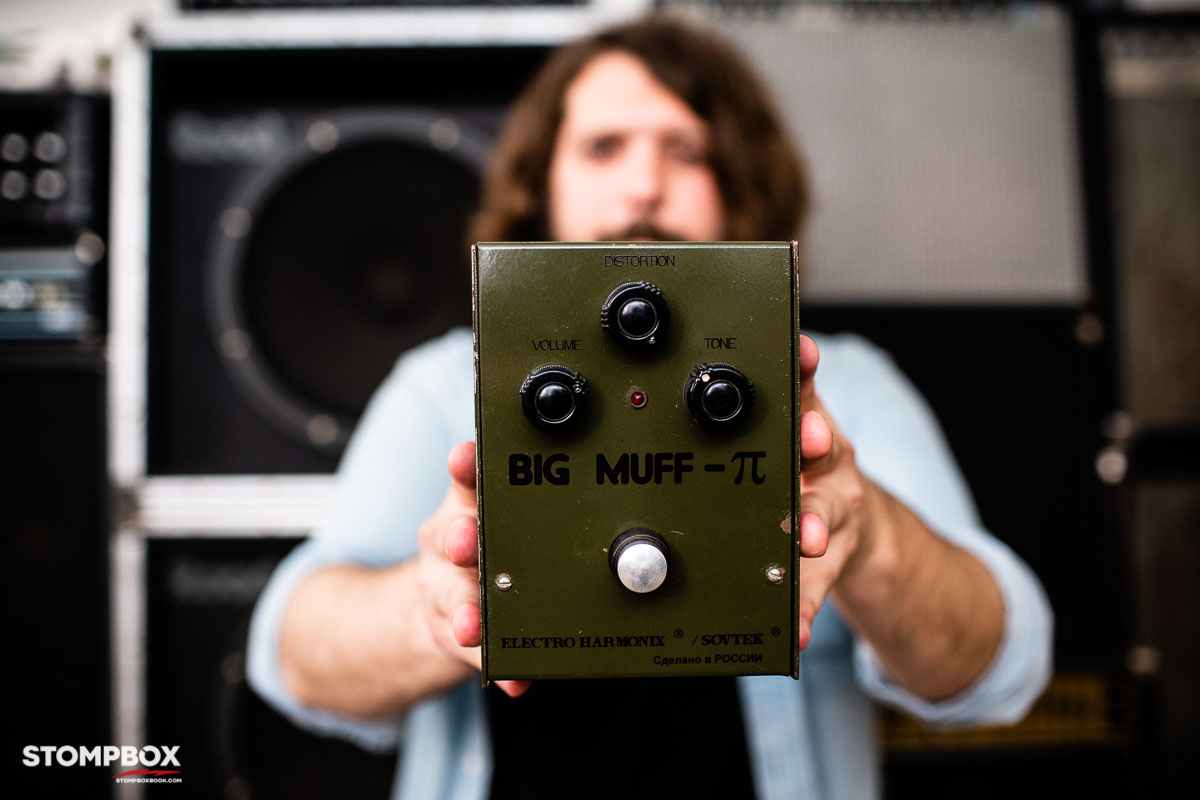
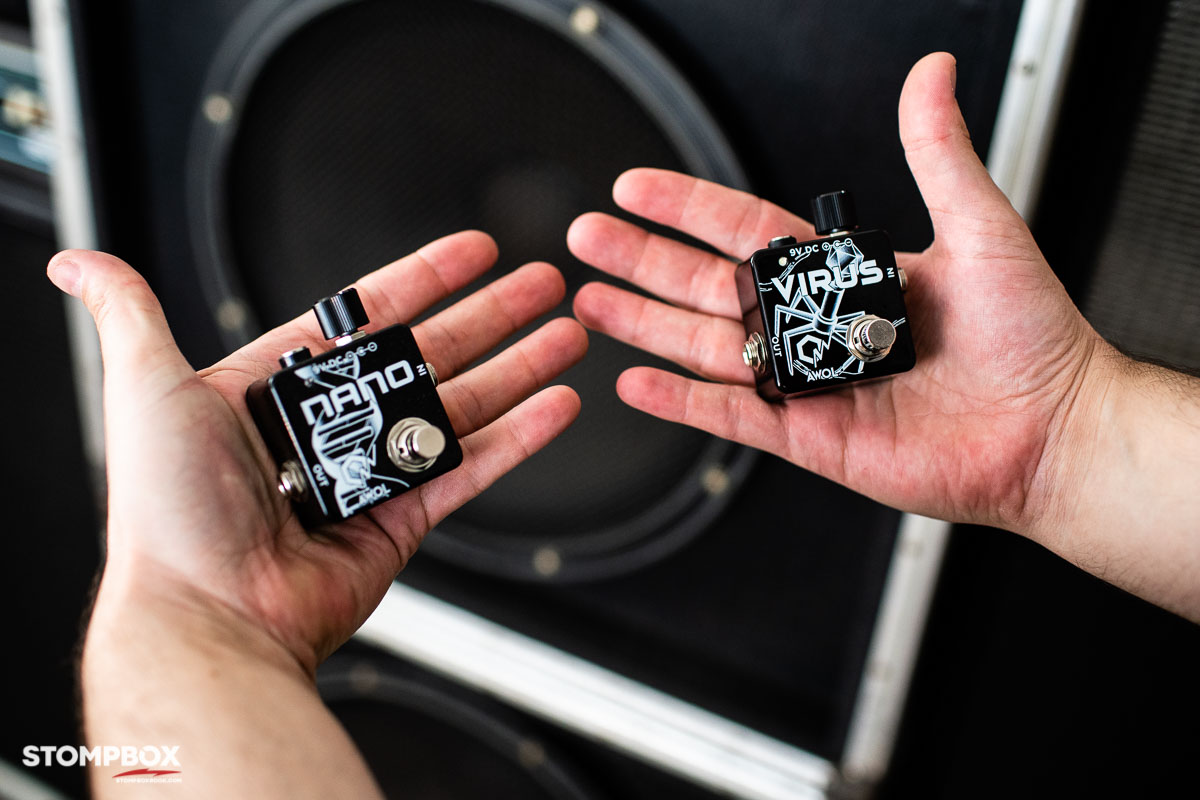
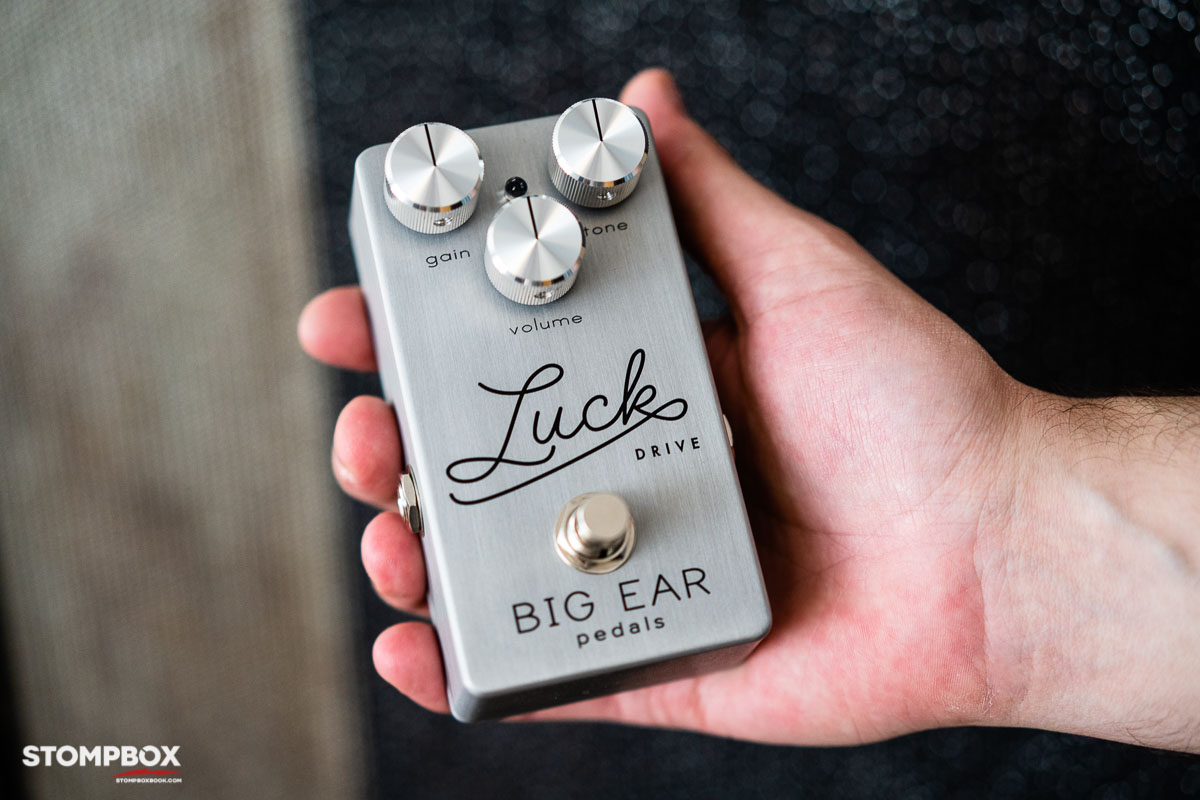
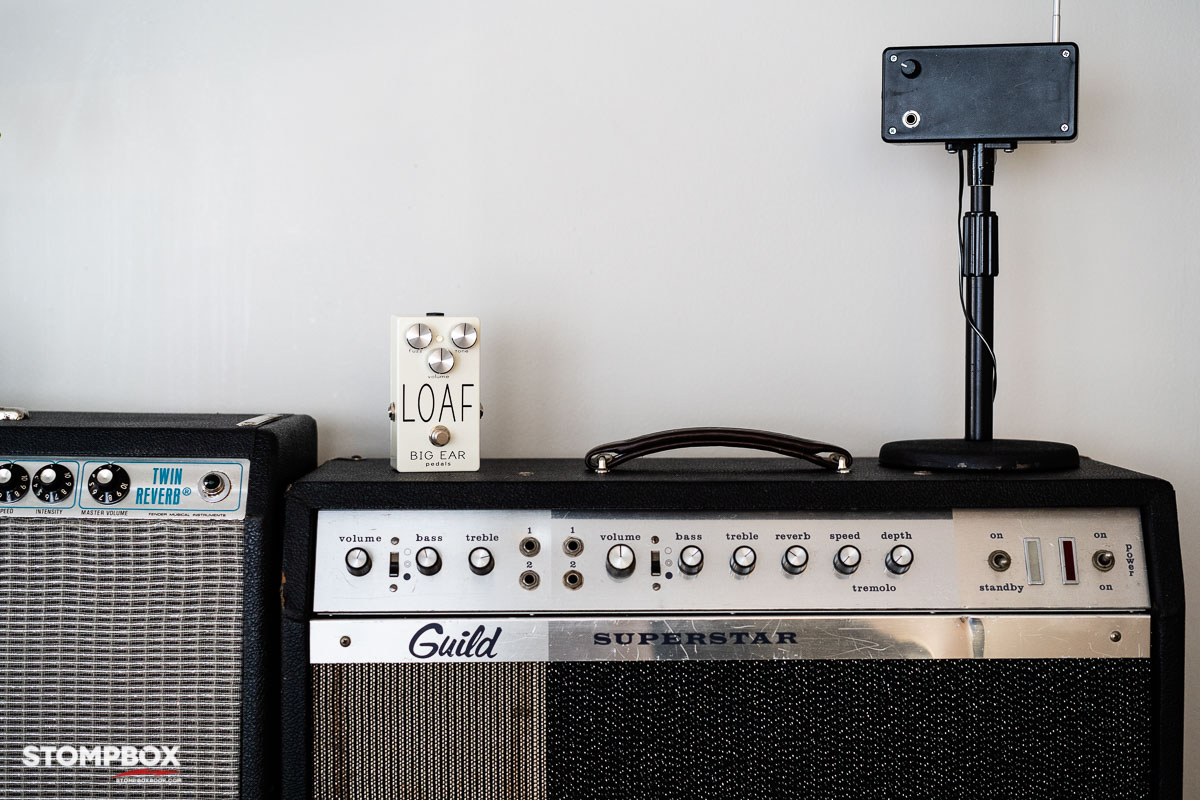
Can you tell us anything about what to expect in the near future from BIG EAR?
I can’t give the exact date just yet, but before the end of 2021 we will be releasing a new pedal–a collaboration with The Tone Mob podcast actually! This one has taken over a year to get right but we are confident that the wait will be worth it!
Get The Limited First Edition of Stompbox and Vintage & Rarities books here
